March 28, 2019
With Pastry Week behind us, after making our pasta sfoglia on Friday afternoon (see the prior post), we got together for a pizza party. This was a no-pressure pizza party… no competition, no judging… we just made and ate pizza and had wine and beer. Well, there might have been a little bit of bourbon beforehand but if there was, I’m not telling, or I don’t remember, or something…
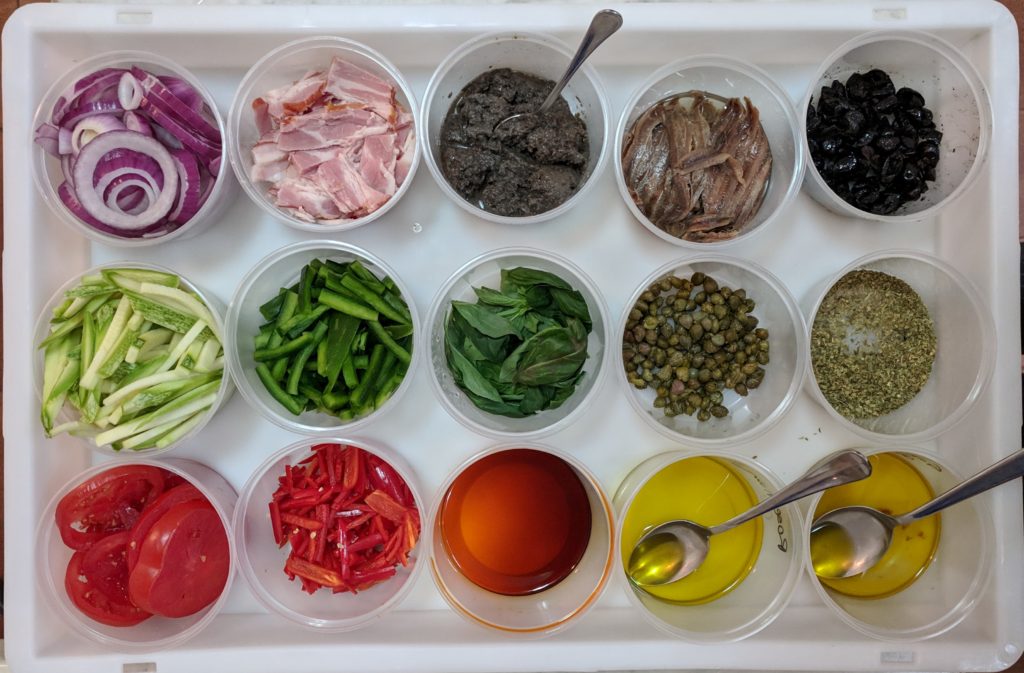
About pizza parties: Chef John feels there are certain foods that are so fundamental to Italian regional cuisine that we absolutely need to nail them perfectly by the time we finish this course. This includes things like pizza, focaccia, handmade pasta, and ciabatta, just to name a few. Pizza parties are fun but they’re also a way to keep practicing pizza-making to solidify our skills. It’s a way to be in class without being in class.
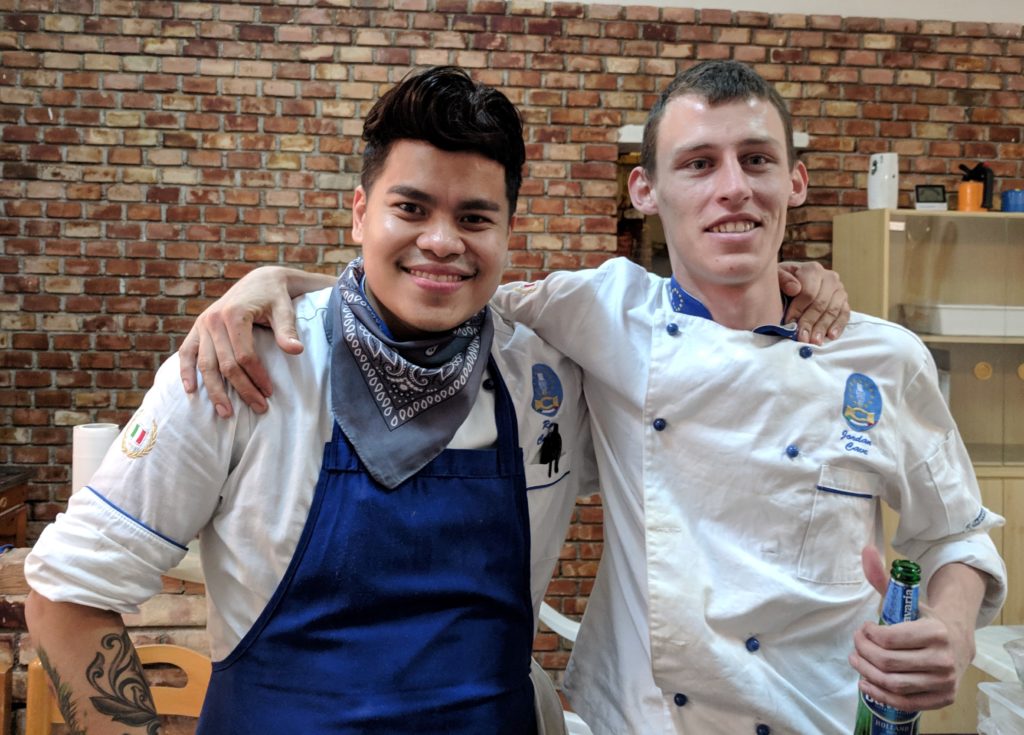
Although Pastry Week wasn’t a particularly stressful week, we all seemed to let loose a bit more than we had at our previous pizza parties. Maybe it was the anticipation of the stress that we knew would accompany the upcoming execution, menu execution, that is!
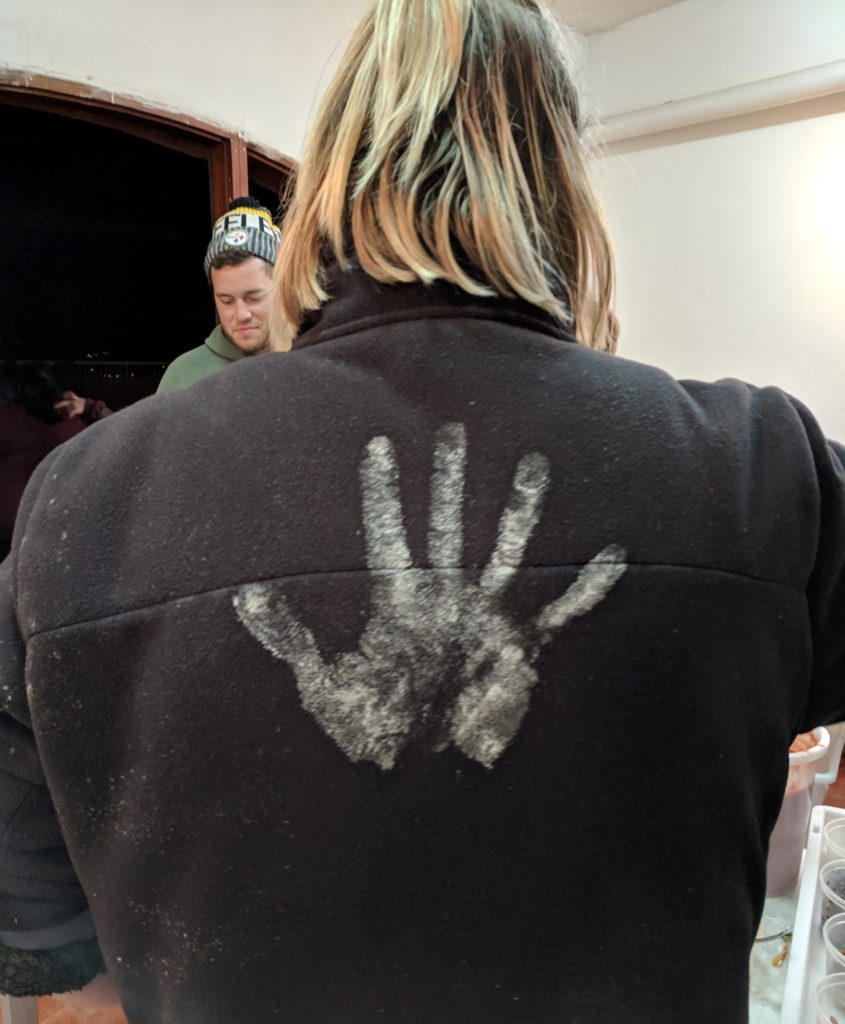
The next day, Saturday, was nominally a free day. It was also beautiful. The chefs packed picnic lunches for us and we had an al fresco lunch on the beach. There was one little bit of business before lunches were distributed, however. We needed to divide ourselves into two groups for our next menu execution, for which preparation started the next day.

Each group also had to randomly pick 10 slips of paper out of a box (well, this is a cooking school so it was really a plastic food container, not a box). Each of the 20 slips of paper in the “box” contained the name of one of the 20 regions of Italy. We had to come up with a menu that reflected each of our 10 selected regions.
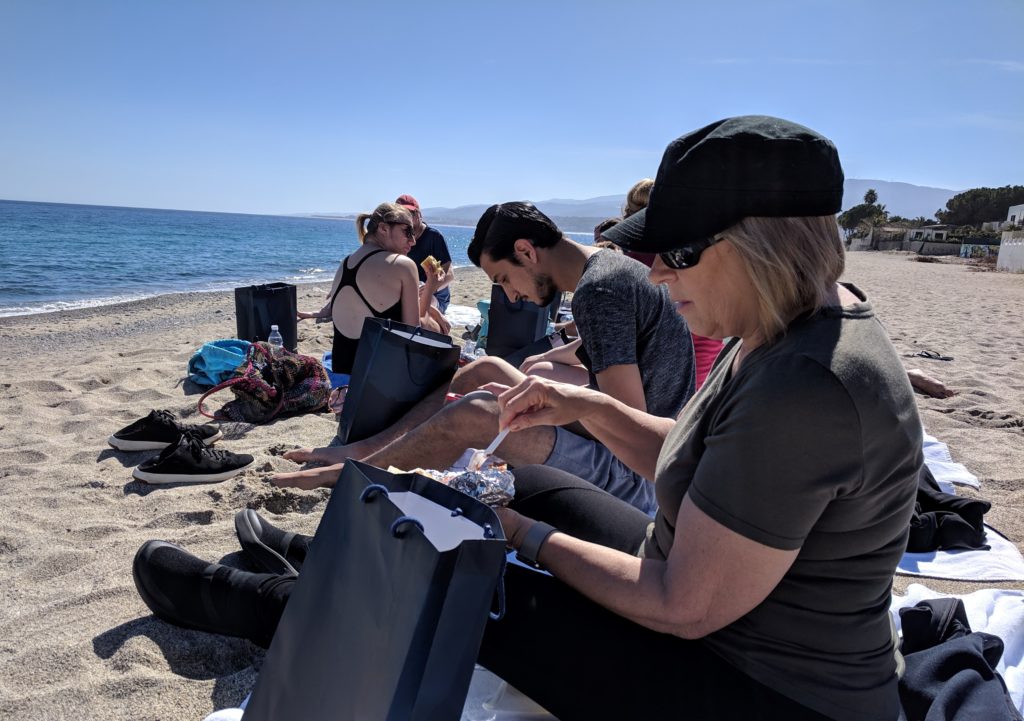
My group was assigned dinner so we didn’t have a meeting to discuss our menu ideas with the chefs until noon the next day. The other group, assigned to prepare a luncheon, had a 9 AM muster. We took the afternoon off completely and planned to convene early the next morning to come up with menu ideas. A few of us did research in the evening to identify the most characteristic raw ingredients and classic dishes of each of our regions. This was a valuable head start the next day.
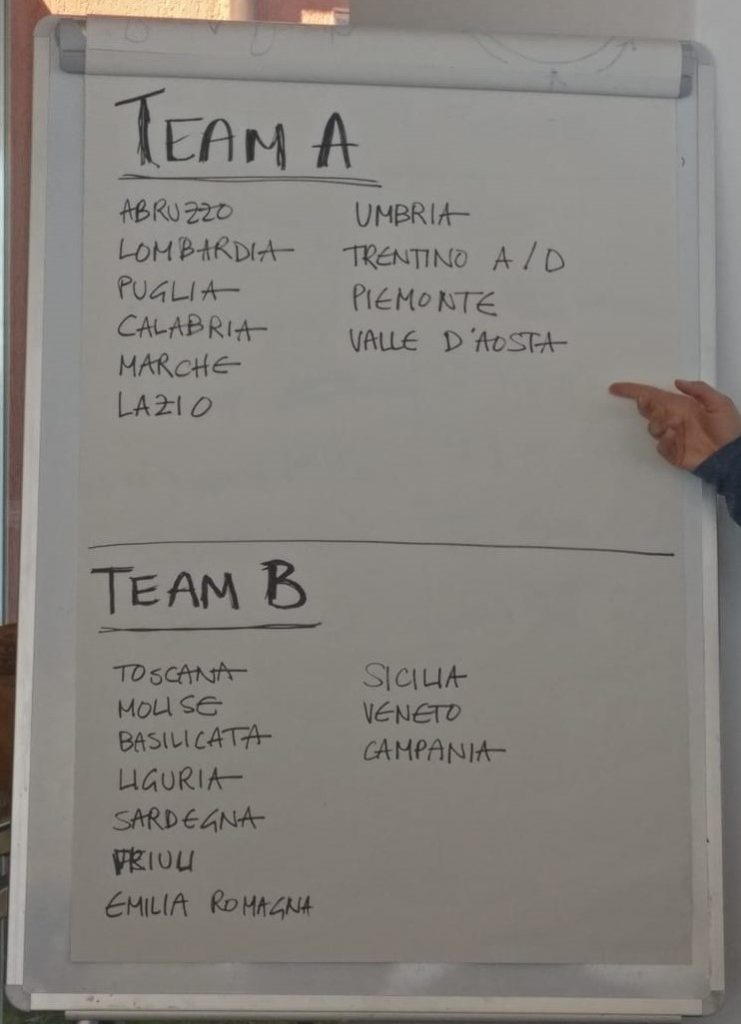
Coming up with a complex menu is stressful. Coming up with a complex menu that meets Chef John’s criterion that it would be worthy of a €250 price tag is even more stressful. Chef John likes complicated menus. He also likes complicated dishes. Sometimes a complicated dish becomes even more complicated during the days of preparation as Chef John gets a new idea that he “suggests” we consider. There’s a certain gleam in his eye when an idea excites him and, suggestion or not, you know you’ve got to try it when he gets that look. (Remember the pasta sfoglia from the end of pastry week? It became one such complication.)

It took us all day, and I mean all day, to come up with a menu that met approval. We also had to pair four wines with our meal. We didn’t actually work on the pairing till the day before service but I’ve noted the wines along with the dishes with which they were paired. Here’s where were our menu ended up:
Antipasto Tris
Caponata with Marinated Anchovy Crudo
Baby Octopus Salad Perfumed with Citrus in a Puff Pastry Shell
Small Arancini Filled with Cuttlefish and Peas on Spicy Tomato Sauce
Pane Carasau (Sardinian Crispy Flatbread)
Prosecco
Table Bread
Cibatta
Primo Piatto #1
Risotto with Peas and Pea Cream Garnished with Mint Oil, Fried Peas, Parmigiano Chips and a Fried Mint Leaf
Primo Piatto #2
Fregole allo Scoglio
(Sardinian Toasted Pasta with Seafood: allo Scoglio = from the Reef)
Falanghina
Primo Piatto #3
Cannolo alla Norma (see below, way too complicated for a parenthetical note)
Secondo Tris
Rabbit Involtini with Prosciutto San Daniele and Sage, Porcini Mushroom Trifulata
Rabbit alla Ligure
(Braised Rabbit with Olives, Artichokes and Pine Nuts)
Pan-Seared Rabbit Loin with Balsamic Onion Sauce
Potato Puree
Spring Vegetables
Focaccia with Parmigiano Reggiano and Black Pepper
Aglianico
Dolce Tris
Babà, Rum Syrup, Pistachio and White Chocolate Sauce, Candied Pistachio
Babà, Hazelnut Liqueur Syrup, Hazelnut and Milk Chocolate Sauce, Candied Hazelnut
Babà, Amaretto Syrup, Almond and Dark Chocolate Sauce, Candied Almond
Gelato
Vin Santo Gelato
Cantucco
Vin Santo
With our menu finally settled just before dinner on Sunday we put together a spreadsheet of all the ingredients we needed as our shopper would depart at 8 AM the next day. We all went to bed early.
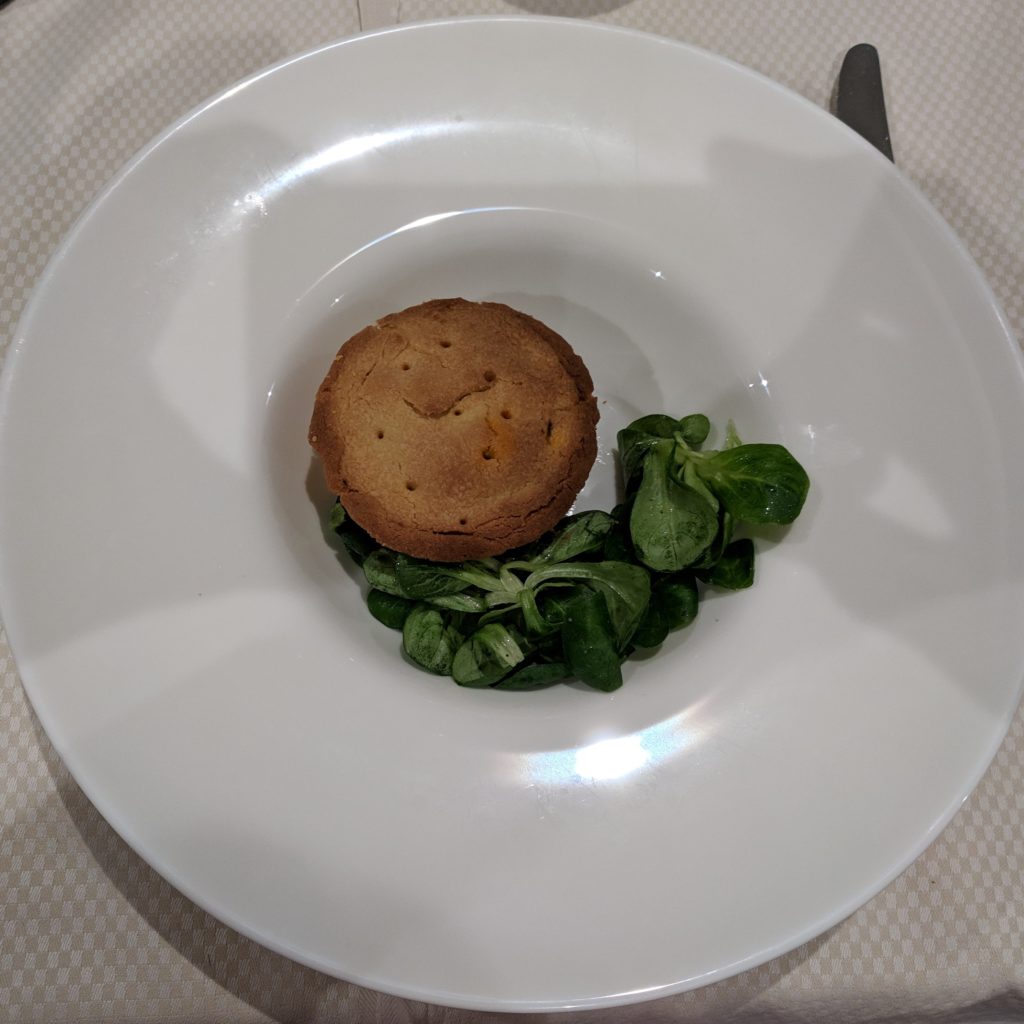
But before that, Chef Juan and Mariana (also a culinary school graduate) treated us to a wonderful traditional Venezuelan dinner on Sunday. The hard work was to begin on Monday and this was a very welcome treat.
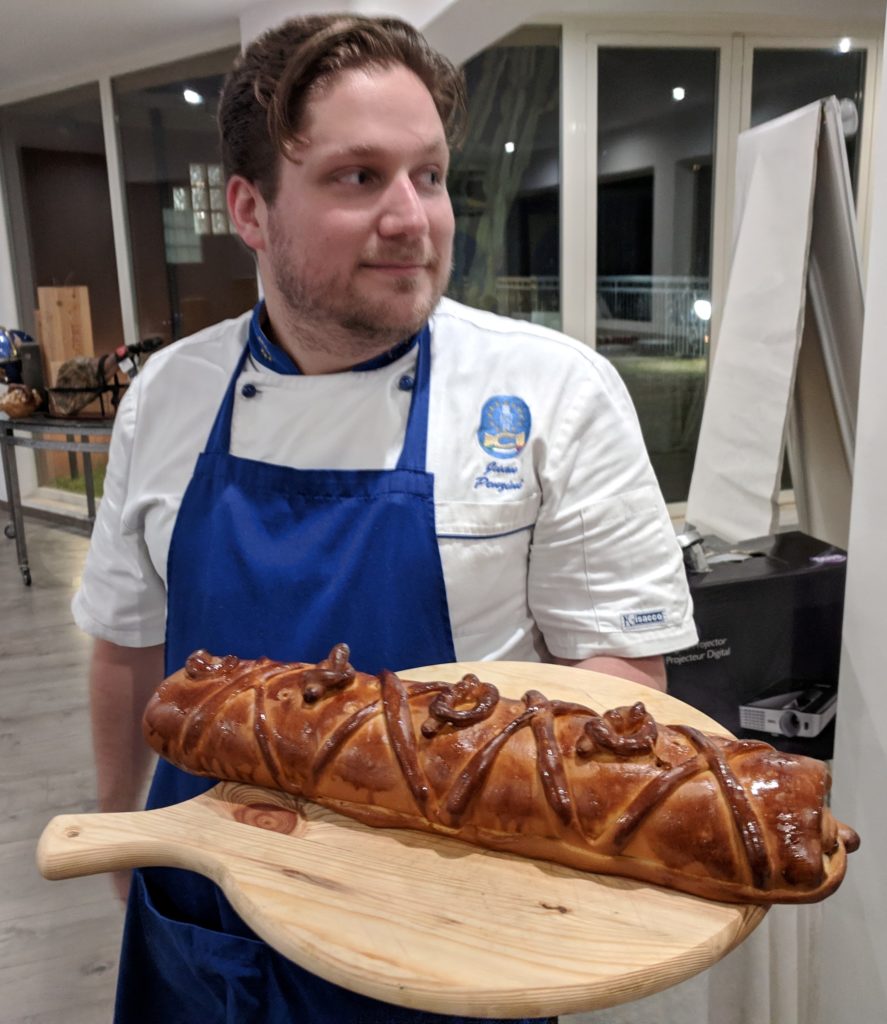
We were allotted kitchen time starting at 2 PM on Monday. We met early in the day to plan out all the tasks, day-by-day, working towards serving our meal at 6 PM on Wednesday. We then made the initial assignment of tasks for the first day.

As the focaccia recipe was mine, I was asked to make it. Of all the remaining dishes I wanted to make the babà and the risotto: the babà because I’d never made babà before and Masetro Caridi had just taught us how, the risotto because I love making risotto. Because I was making the focaccia and the babà, it was logical that I should make everything that needed to be prepared in the Pastry Kitchen. That still left the risotto as an option for me to prepare on the night of service as all the component parts would be prepared by the other members of our group.
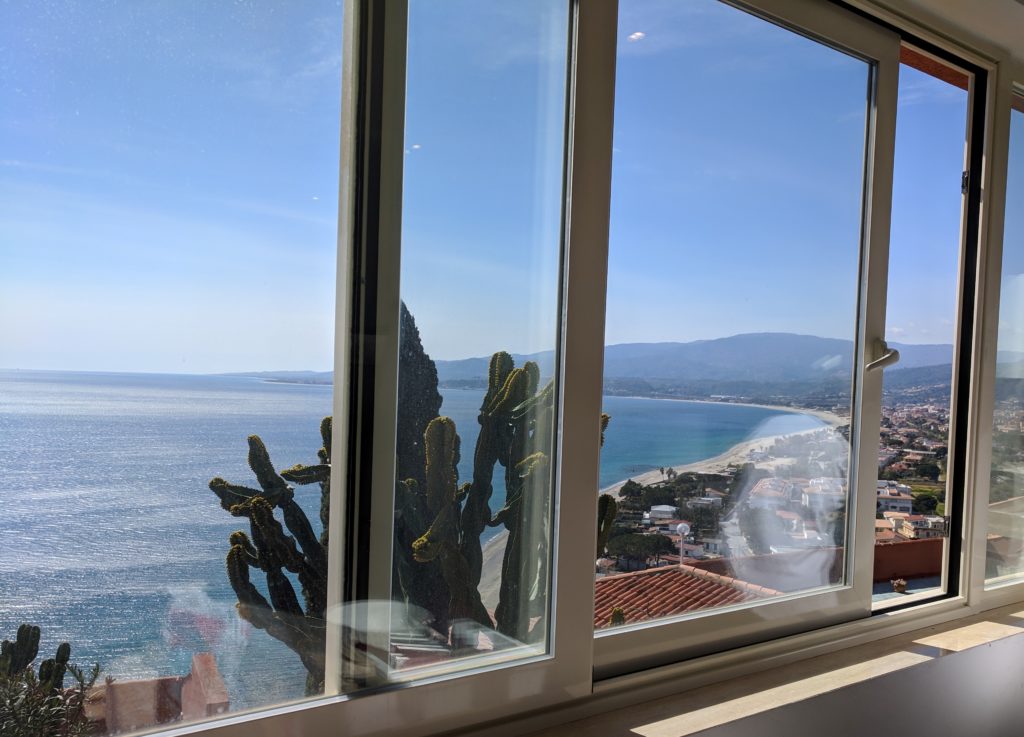
I spent three calm afternoons (well, other than one melt-down by a kitchen assistant on the last day) in the Pastry Kitchen (called the Pastry Lab, here). I made:
- Biga (a preferment for ciabatta)
- Cibatta
- Focaccia
- Pane Carasau
- Cannoli Shells
- Cantucci
- Babà
- Three different liquor syrups for the Babà
- Chocolate-free sauces for each of the Babà for a guest who did not eat chocolate (one of the other students made the chocolate-based sauces)
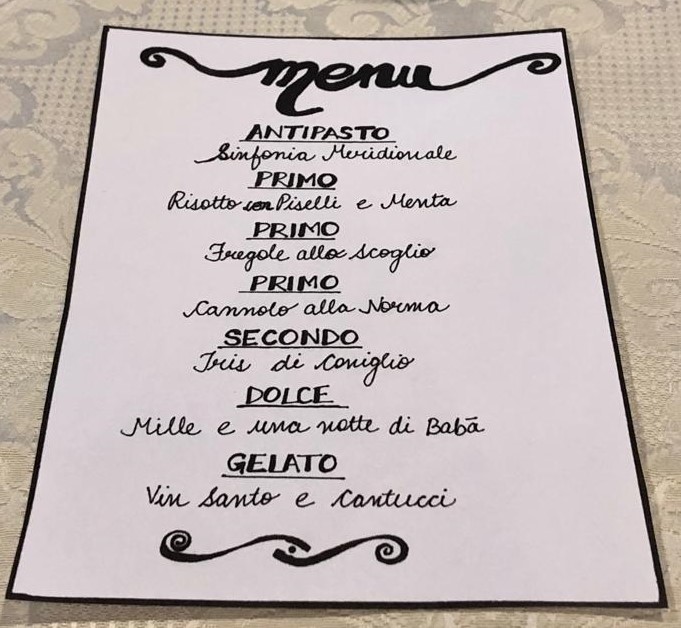
Our menu card.
Cannolo alla Norma is really a Frankenstein. We took two classic Sicilian dishes, one sweet (Cannoli) and one savory (Pasta alla Norma) and combined them. I made savory cannoli shells. The filling was eggplant with three types of ricotta (fresca, salata, and infornata). The whole thing rested on a puddle of tomato sauce. This was one of the ideas that captivated Chef John after we had proposed a much more traditional pasta (Gleam…Suggestion…Execution).
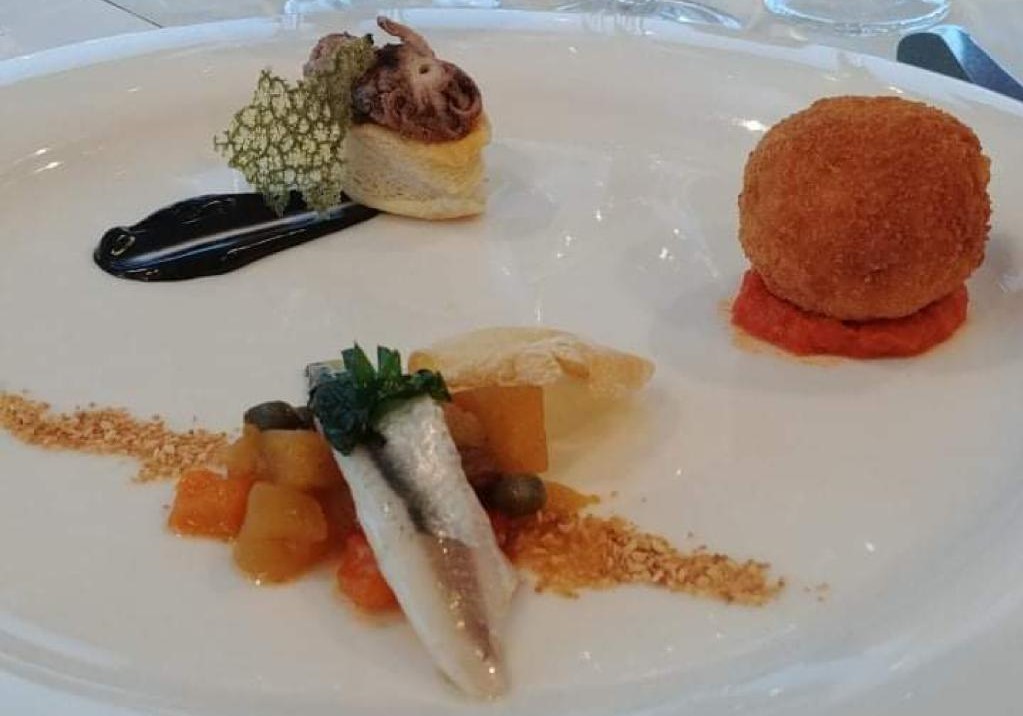
As for the pasta sfoglia (puff pastry), we thought our antipasto was a done deal after Sunday’s meeting but somewhere around Tuesday Chef John thought it was too plain. He suggested (Gleam…) that we make puff pastry shells to hold the baby octopus salad. As we were nearing execution time, one of the other students was in the pastry lab rolling out, cutting, and baking the best of the puff pastry we had made on the last day of Pastry Week to make shells for the octopus salad!
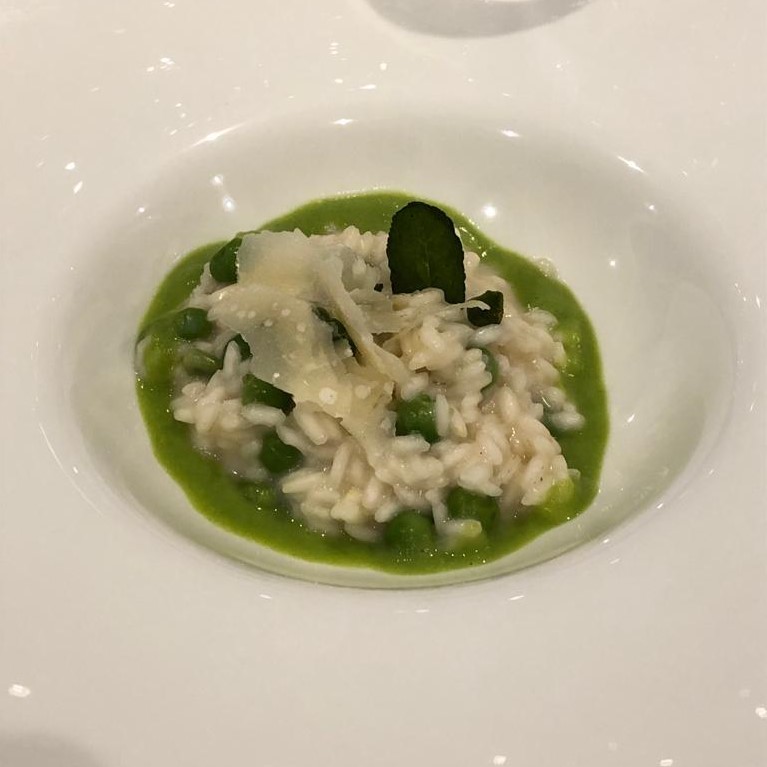
The group asked if I would cover front of the house for the dinner. Everyone agreed that I could still make the risotto and they would cover my position but it just seemed too complicated and stressful, as well as disruptive for the guests, so I opted to just work front of the house.
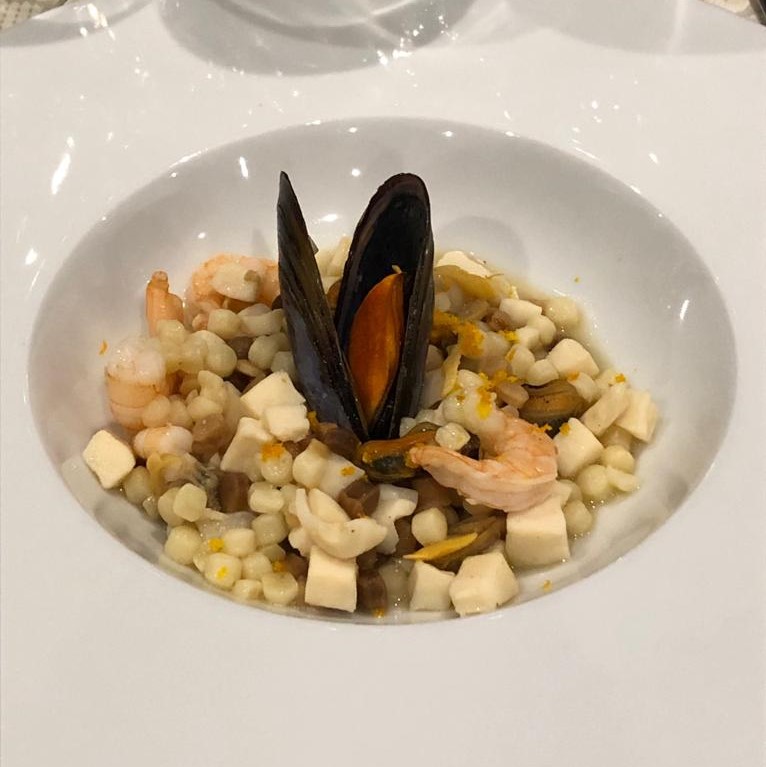
I had to introduce each dish, describe where it came from (if traditional) or how we created it using ingredients characteristic of one or more of our regions, describe each of the wines and explain why they paired well with the dishes. I also added a bit of patter here and there to keep the evening light with anecdotes about the possible origin of the name “vin santo” and a story about Pasquale Caputo, aka Pat Cooper, the Italian-American comedian.
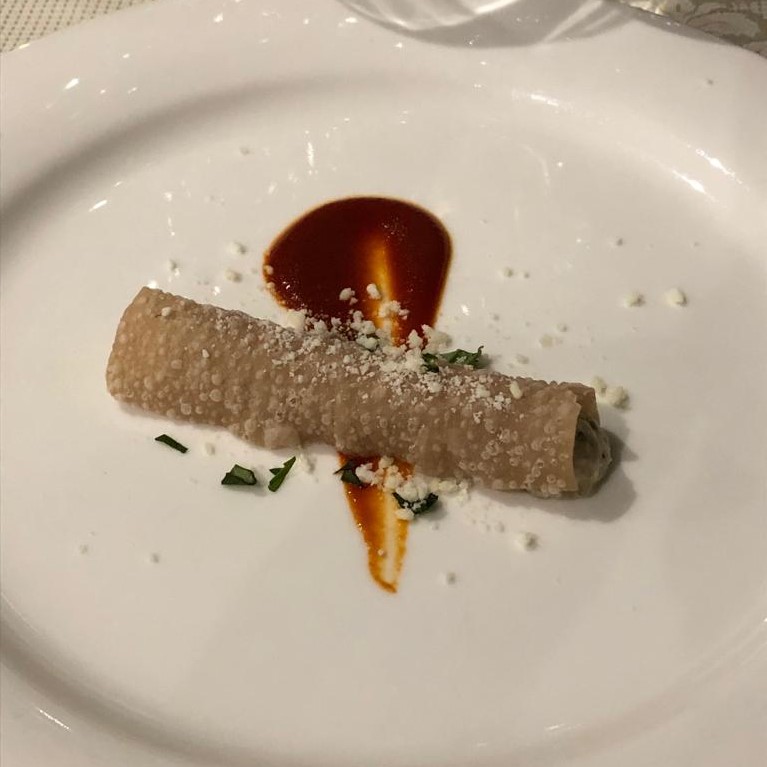
When the meal was over, the chefs marched into the kitchen to give us a bit of feedback (the positive feedback…the more critical feedback would wait till after break). As they were leaving, I asked Chef John if we could open a bottle of wine in the kitchen (a violation of school rules). He said we could do ANYTHING we wanted. The emphasis was his. I know the criticism, when it comes, will likely be sharp, as it should be (you can’t justify a €250 dinner without perfection), but I also know that his response was an indication we had done a good job. It was a positive end to a taxing week.
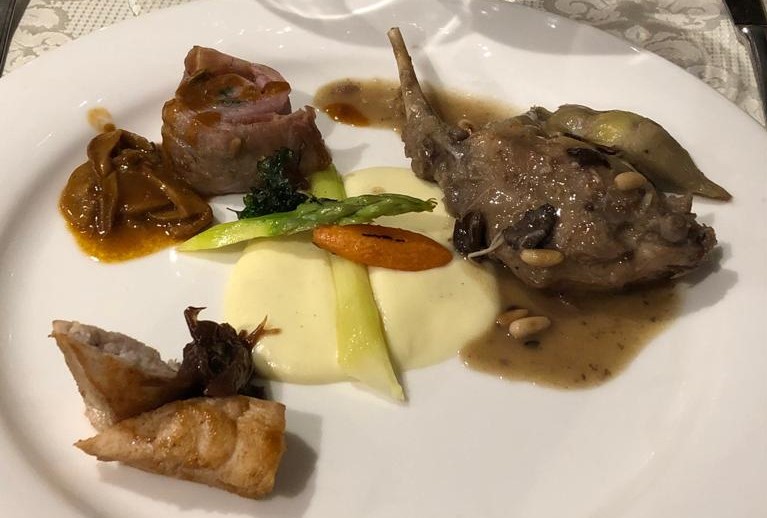
Unlike our first menu execution where classes ended on the day we cooked and served our meals, we had one day of class left.

It was a pretty low-key day though. We left at 8:45 in the morning on Thursday, March 21st for a “Cultural Excursion” to Azienda Statti. The Statti Company (azienda = company) is located on an estate that has been in the hands of the Baronial Statti Family since the late 1700s. The company is currently managed by two brothers, Alberto and Antonio Statti.
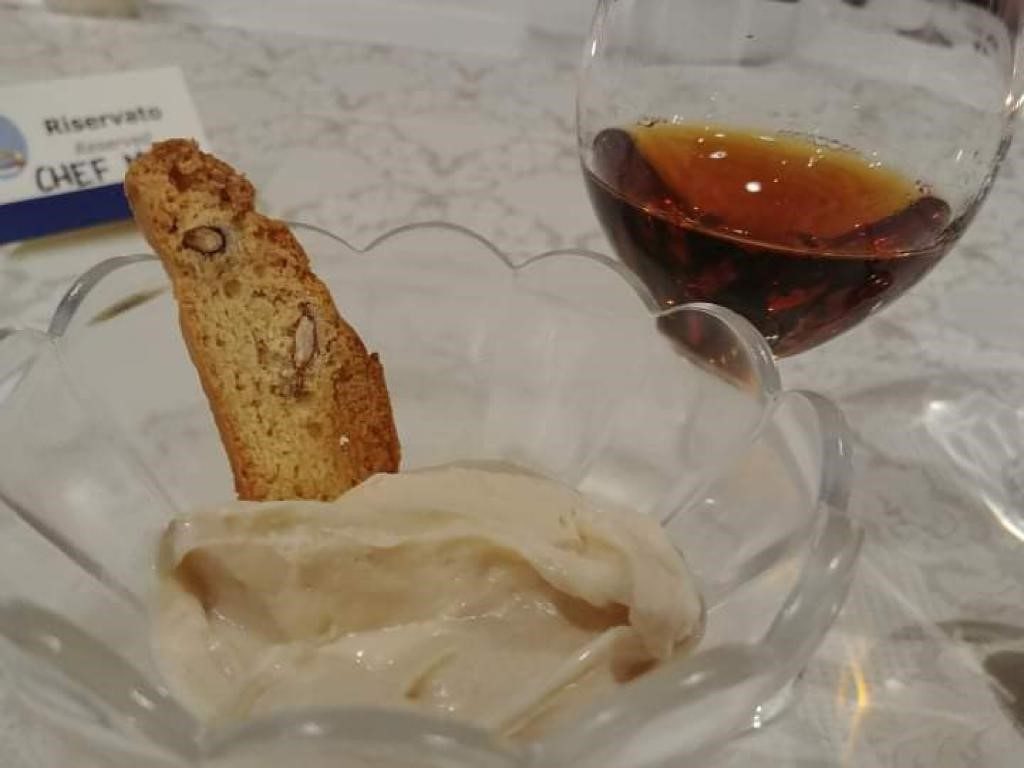
The estate originally produced olive oil. Since the 1960s it has been producing wine but only in the last few decades have they endeavored to market wine under their own name. The estate also has citrus groves, a range of other crops, 800 cows, and forage for the cows.
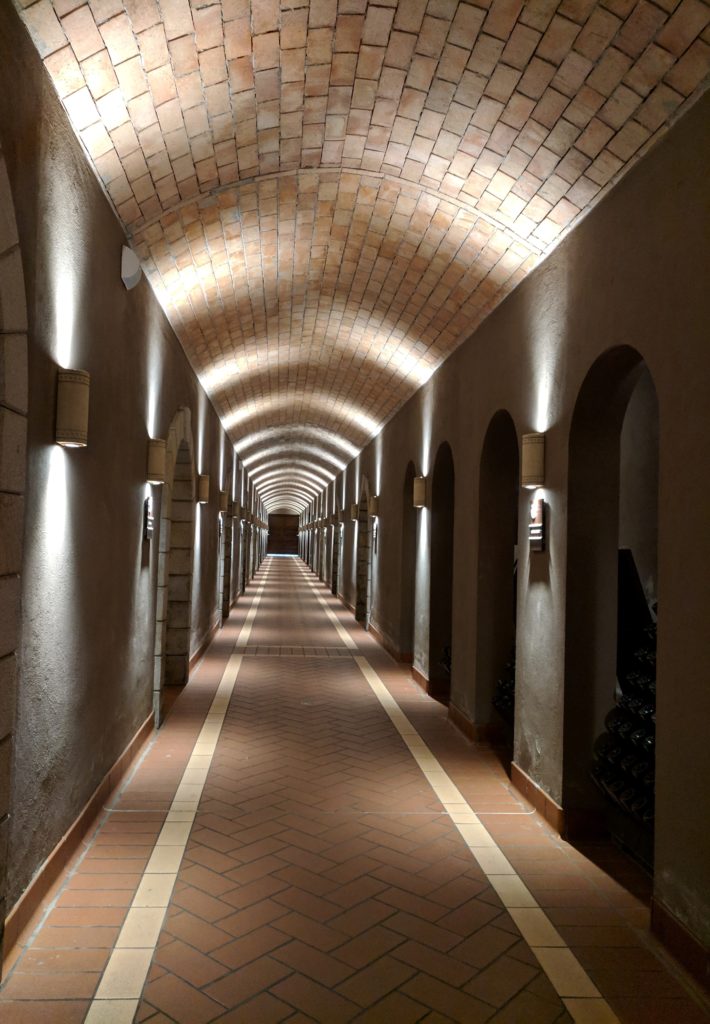
Organic waste from crushing grapes for wine, pressing olives for oil, and from cows is used to produce methane. Much of the methane is used to generate electricity. The olive pits are not used for methane but are dried and coarsely ground to produce fuel for pellet stoves used to heat the buildings. The estate is energy self-sufficient, and even sells electricity back to the local utility.
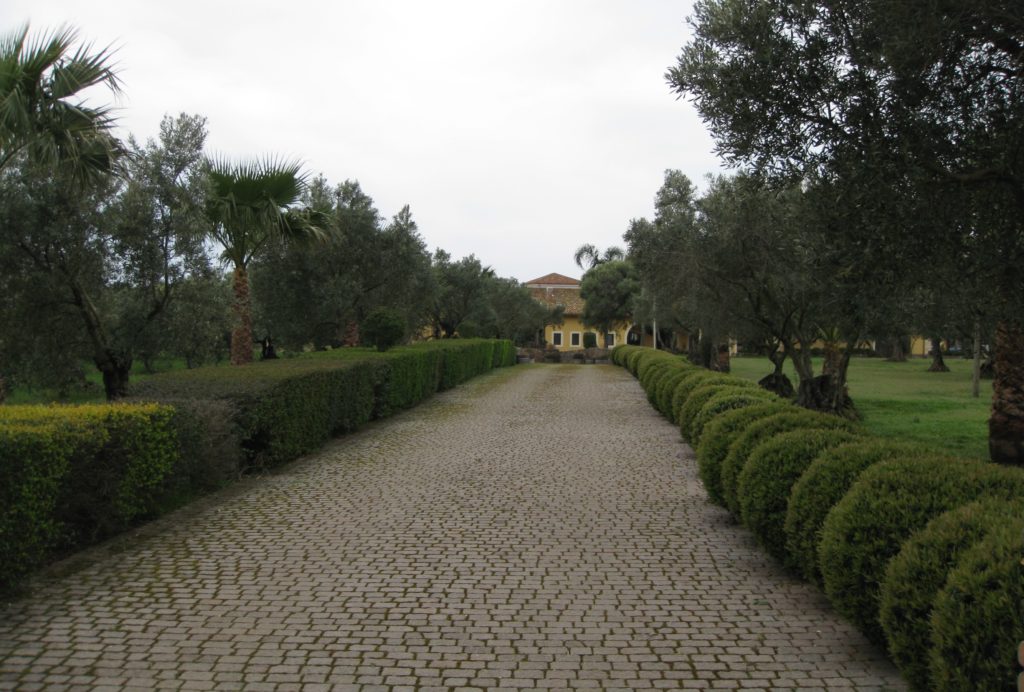
After a tour of the grounds and winery we had a tasting of eight wines, four white and four red. The group consensus was that the wines were quite good. Remember, we had a whole week of wine tasting with a sommelier as well as the occasional guided tasting at other times so we’ve tasted a fair amount of wine.

Other than Cirò in northeast Calabria, Calabrian wines aren’t well known outside of Calabria. Statti is trying to break into a crowded market. One of their strategies is to price their wines aggressively low to try to gain market share. Good wines at great prices equals a winning strategy for consumers.
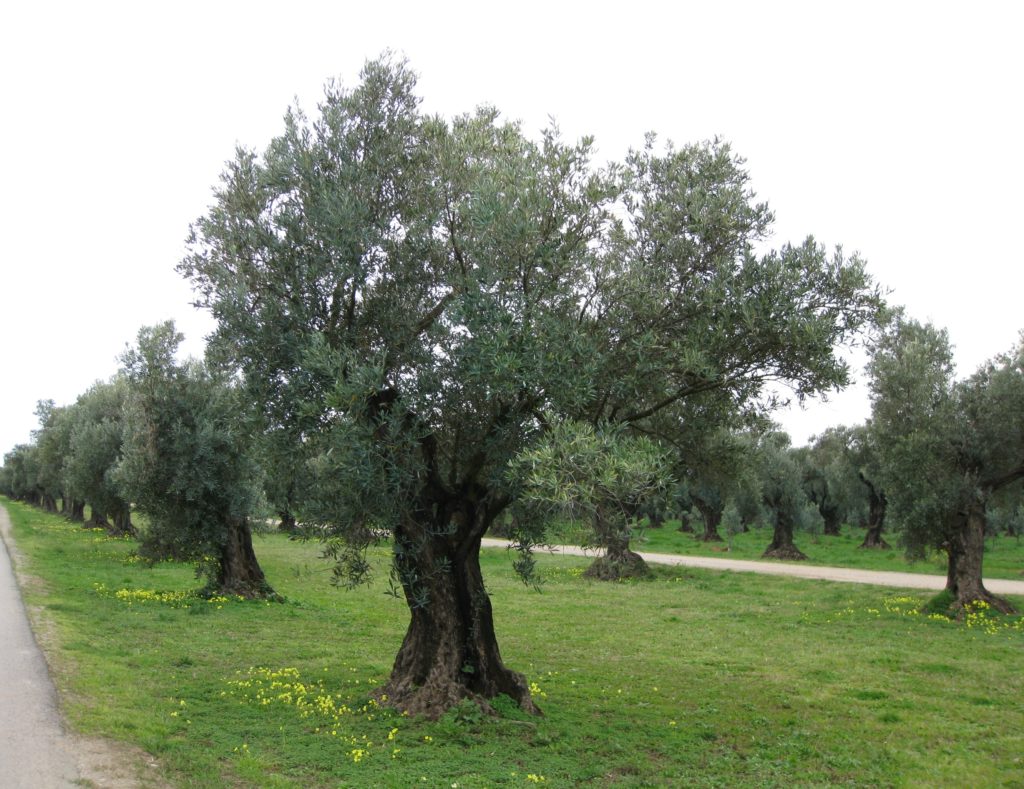
Following the wine tasting we were served an array of locally produced cheeses and salumi with bread and olive oil, from Statti, of course. Their olive oil is really good, too!
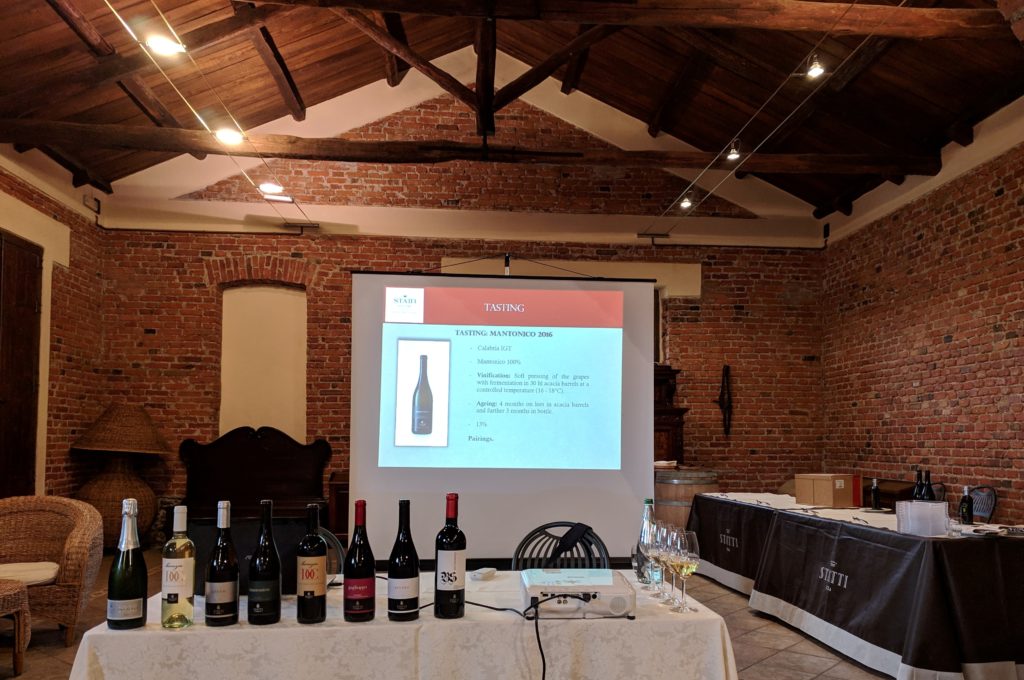
We got back to school minutes before lunch was served at 2 PM. After lunch we were free. A five-day break was looming and the atmosphere was relaxed.
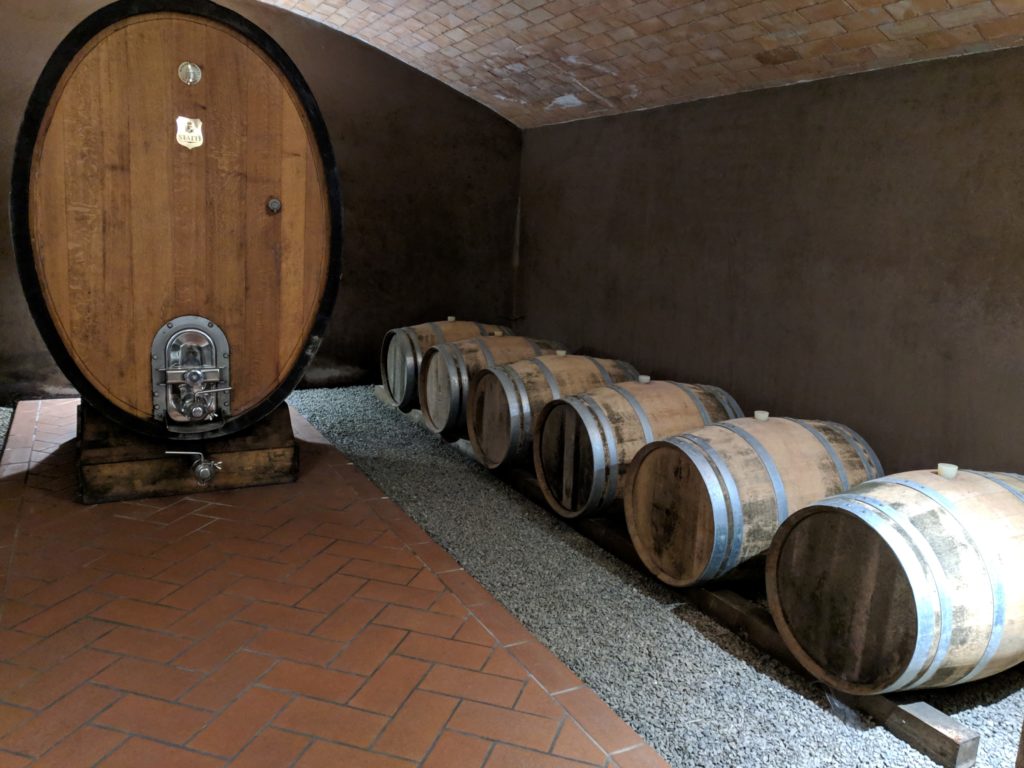
The next day I planned on boarding a plane to Pisa to spend a few days with Zia Fidalma and cousin Massimo in Benabbio.
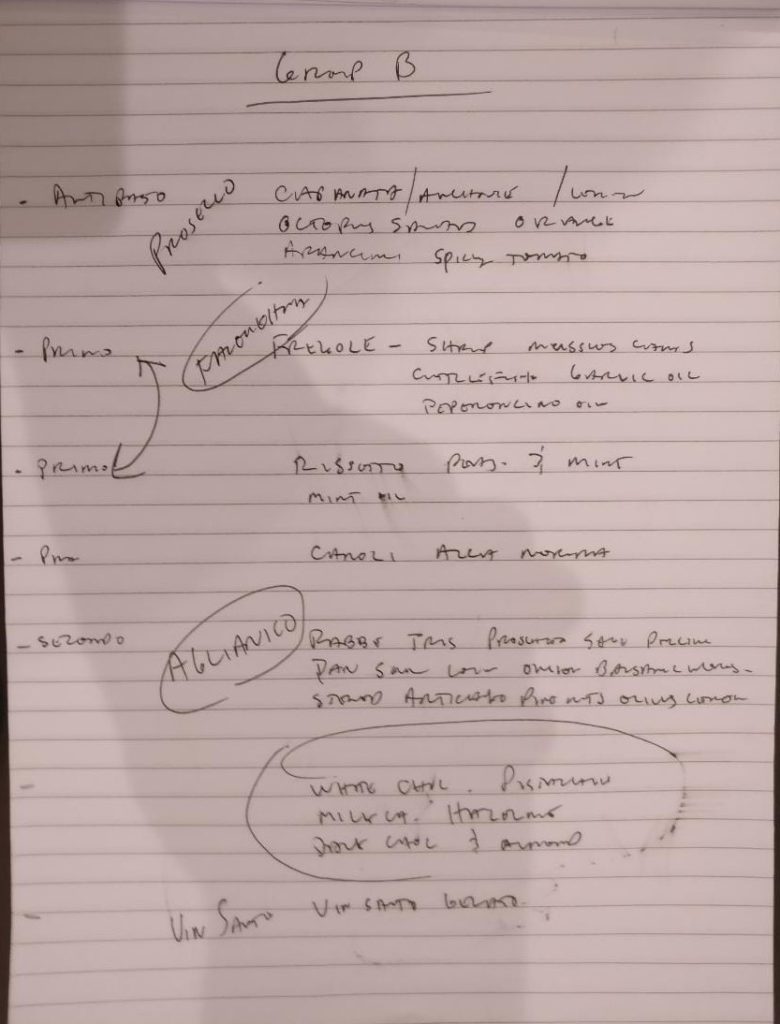

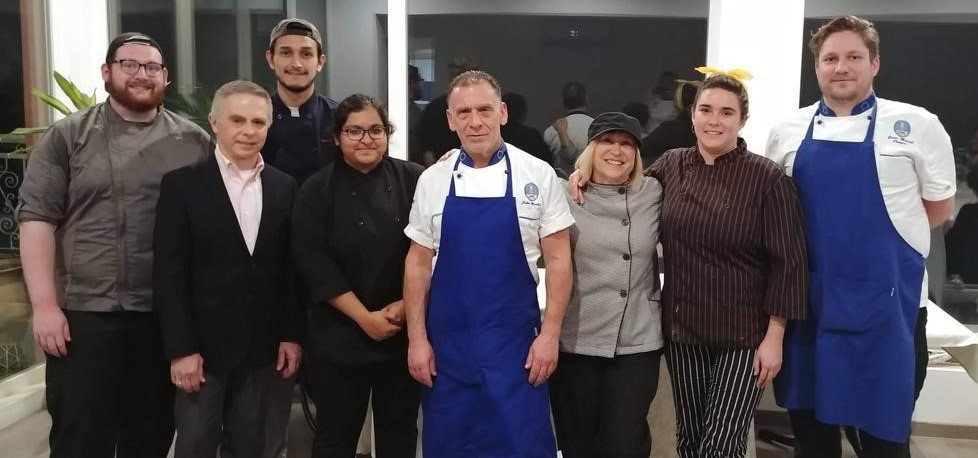
Just….WOW!…
What can I say. I need to loose weight but otherwise I’m no worse for the wear!
I am totally exhausted after reading your communique – WOW!!!
I can’t wait for you to get back!!!!!!!!
Just a tad over two weeks and I’ll be back!!
Honestly Gary….i too am exhausted….I’m in San Miguel de Allende, Mexico…..holy mole…I’ve followed your “adventure” and no idea about an adventurous palate…..I’m way too pedestrian…
you really had commitment…time, $$$, patience…..I know you had a great time…so BRAVO!!!!!
It has been the time of my life. It has definitely become the inflection point for me career-wise. When I get home I am turning to food full-time. I only have it partially worked out but I’m excited.
Seams like everything is fun and a lot of effort toward perfection. Enjoy your break!
We look forward to your return home.
XX’s and OO’s
Pat
Perfection is the goal. What’s interesting, to me at least, is that I have nothing more pressing to do at the moment (though I do have one legal case to review that has been languishing for more than a month!) so striving for perfection is a perfectly good use of time.
I think I may have run out of adjectives other than stupendous! I think this brings new meaning to the three-course meal.. because of foods within each course. it seems there are 4 -5 dishes between tris/piattas🥰. maybe about 18… haha. Anyway I have taken to wearing a very large terrycloth bib when I read your dispatches!
You are so right! Each of those plates that were a “tris” had three complete dishes on them…smaller portions, of course, but complete dishes nonetheless.
I hope this place is REAL!
I keep going to the website, and it’s all jumbled up. It changed from the last time a few years ago or so I went there.
Really hoping to get there post pandemic world, to learn Italian Charcuterie and Artisnal Italian Cheese Production.
The Italian Culinary Institute is definitely REAL. It is an amazing culinary experience!!
They’re planning on revising the website but don’t let that stop you. The courses are really amazing.